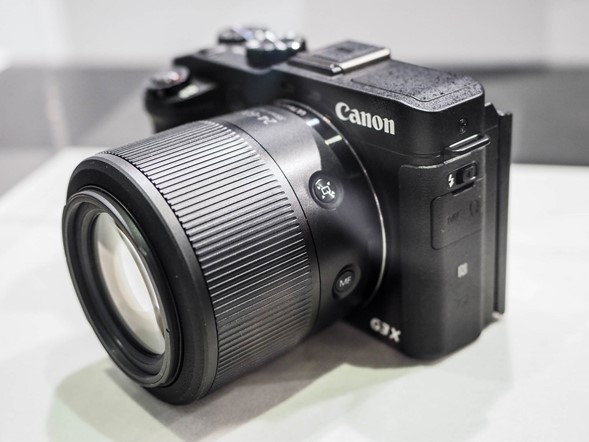
Even though it has the rectangular shape that we expect with a compact camera, the new Canon Powershot G3-X is not a huge amount smaller than some modern SLR’s, but it has the equivalent of a 24-600-mm lens built in. The G3X is the latest addition to the line which is slipping in between the Canon G7 X and the G1 X Mark II.
Few photographers own a lens with that kind of reach, but it’s ideal for photographing birds, wildlife, aeroplanes and anything else that’s a long, long way away. What’s especially impressive is that the lens’s maximum aperture range is f/2.8-5.6. This means that at 600-mm there’s a maximum aperture of f/5.6, larger than is usually achieved with telephoto lens and tele-converter combinations on DSLR’s, so it gives greater scope for using movement freezing shutter speeds. However, as it has a 1-inch type sensor, the G3X still has a bigger sensor than many compact cameras on the market. It’s the same 20.2-million-pixel CMOS (complimentary metal oxide semi conductor) sensor as is found in the Canon G7-X and it’s again paired with the Digic 6 processor.
Range Of G3 X
Long lenses emphasize camera shake, which can lead to blurred images, but the G3X has Canon’s latest Advanced Dynamic Image Stabilizer which works over 5 axis. This gives photographers a choice of correction settings with Low only using optical stabilization, Standard using optical and digital correction and High using optical and strong digital correction. Sensitivity can be set in the range ISO 100-12,800 and there’s a maximum continuous shooting rate of 5.9-fps, which can continue until the SD/SDHC/SDXC card is full with JPEG files. It is also possible to shoot raw files, and raw and JPEG files at the same time, but Canon was unable to tell me the burst depth at the time of writing.
Quality
Naturally, it’s also possible to shoot Full HD movies and there’s a maximum frame rate of 60-fps at 35Mbps. There’s full control over disclosure and audio in video mode and mic and headphone sockets are provided, which makes the G3X suitable for quite serious users. Focus peaking is also on hand for those who prefer to focus manually when shooting stills or video.
Conclusion
That’s quite a nice addition, especially bearing in mind that the long lens is likely to make the camera twist on standard plates at some angles.
